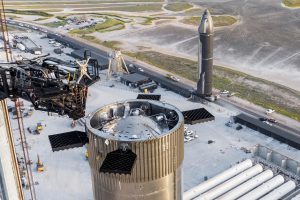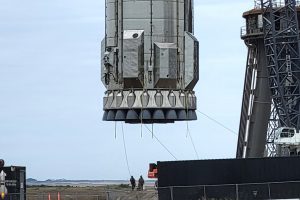Elon Musk, in what has become a tradition, took to Twitter to clarify the outcome of SpaceX’s new Starship launch and landing attempt in greater detail.
This time, Musk’s debriefing comes after SpaceX’s Starship serial number 10 (SN10) made history by being the first prototype of its kind to land in one piece – a huge step forward for the company. However, less than 15 minutes later, an uncontrolled fire broke out in the rocket’s stainless steel propellant tanks, causing a violent depressurization and explosion that blew the Starship SN10 apart.
The safe landing of Starship SN10 came less than 30 days after the launch and landing of Starship SN9, which featured a quick-fix design adjustment to avoid a different problem that caused Starship SN8 to fail shortly before touchdown last December. As it turns out, the design modification – which SN9 never had the opportunity to evaluate – could have been the Starship SN10’s undoing.
During their skydiver-style approach to atmospheric descent and the violent flip needed to transition from the belly-down attitude into a propulsive vertical landing configuration, starships must perform highly unusual maneuvers. Starships require secondary ‘header’ tanks to store high-pressure landing propellant, allowing them to perform acrobatics.
Header tanks make it much easier to safely store and feed propellant to Raptor engines than the Starship’s building-sized main tanks, which must be held at high pressures. They also help to stop fuel flow interruptions or bubbles, which can easily damage or kill high-performance liquid rocket engines like Starship’s Raptors.
SpaceX concluded that low pressure in the liquid methane header tank was primarily to blame after Starship SN8’s last-second landing failure on December 8th. Normally pressurized with methane gas in a cutting-edge method known as autogenous pressurization, SpaceX appeared to believe that process was the root cause and reacted by introducing a last-minute helium pressurization workaround. Helium is not a suitable long-term option since it is almost difficult to resupply in-situ (on the fly), leaving any Starships relying on helium stranded on the Moon or Mars.
Starship SN9 eventually failed a few seconds before Starship SN8 when one of its Raptor engines failed to ignite, preventing the helium pressurization patch from being tested in flight. As it turns out, Musk claims the very patch was the cause of Starship SN10’s demise.
As the SpaceX CEO believes, one or more of the vehicle’s three Raptor engines started to ingest some of the helium pressurant as they drained their methane header tank as Starship SN10 forged forward past the points of failure that destroyed SN8 and SN9. As a result, engine thrust would have fallen below predicted levels, preventing Starship SN10 from slowing down enough to make a truly soft landing. Instead, the Starship slammed into the ground at a top speed of 25 mph (10 m/s), obliterating its landing legs and destroying the skirt portion.
It’s unknown whether the SN10’s subsequent explosion was caused solely by the hard landing, as both official and unofficial webcasts of the launch seem to show a massive fire that started just before touchdown and continued to burn before it failed. Regardless, Musk claims that “multiple fixes” are being worked on for Starship SN11, which is on track to launch as soon as next week. It’s unclear whether the proposed “fixes” would cause SN11’s launch to be postponed.





